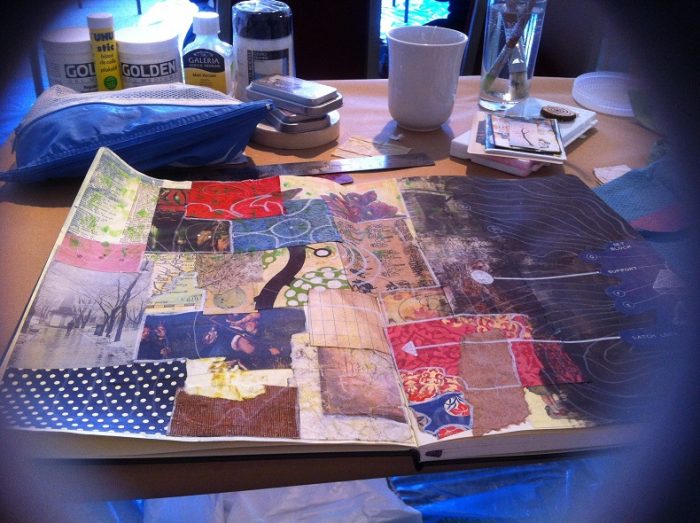The blank page…writers, you are not alone.
Once upon a time, I was determined to start writing a journal.
So, I bought a journal.
I opened it. I stared at the first page. I stared some more…nothing.
No words were coming out of me. My usually cluttered mind seemed empty all of a sudden—or it was too congested to discharge anything. (Sorry, constipation analogy intended.)
I looked over to my bookshelf where a sketchbook had been sitting for months, quietly collecting dust.
Once upon a time, I was also determined to get artsy and creative. So I bought a sketchbook. I opened it. I stared at the first page. I stared some more…nothing.
Yes, writers, you are not alone. Who else stares at the blank page and pulls out their hair? Artists!
Here comes the twist to my story—I found a simple cure to the blank page dilemma: art journaling.
For those who are not familiar with an art journal, here is a good introductory video of the process, and you can find many examples on YouTube and Pinterest. An art journal is basically a visual diary that combines writing, drawing, painting, stamping, and collage. The list is by no means exclusive—people take it up a notch with printmaking, incorporating fabric, adhering different objects to the journal—the sky is the limit.
What does this have to do with writer’s block? The method brilliantly eliminates the fear of a blank page. How? By filling up that blank page—extremely quickly! Instead of a blank canvas, you work on top of or between the lines of a “prepped” background.
One of my first teachers in art journaling was Teesha Moore. She is known for not working on a white page! In her class, we’d first cut out paper to the right sizes, paint all the pages with different background colours and textures, and then affix them together to make our own journals.
With a coloured background for each page, we’d typically then go through magazines to cut out interesting images and letters, and use them to decorate and make edges for the page.
This is a very intuitive process of collecting, choosing, and applying materials onto a page. It’s done quickly and without overthinking every choice or trying to fine-tune everything. When you eventually start writing and drawing, the page is at least half filled. You can also write, draw, and adhere anything on top of what is already there to cover it up. What helped me a lot is that I tackle the fear of starting from scratch with quick action and move forward.
So, why does a “prepped” background work?
Deep down, I believe it is because a blank page triggers my imposter syndrome.
“Who am I to think that I’m a writer?”
“How am I qualified to writer about this?” (Oddly enough, even when I am writing about my own story, I sometimes still feel this way!)
“What if someone pick up a mistake or challenges what I say? What if they know better than I do? Maybe they should be writing this, not me!”
“Who do I think I am?”
And it goes on and on. So, I use a page filled up with “creative notes” to shut up the inner critic. Once it is silent, I can finally focus on writing, instead of worrying that I am a fraud.
With this “prepped” background, I’m not staring at a blank canvas. I have now formed a habit of starting every piece I write with this method. When I am struggling, it helps me get past that procrastination and self-loathing stage. It tricks my mind to focus on collecting data and being productive.
Even when I am feeling inspired, spending at least a little time creating a prepped background forces me to get out of that egoistic voice. Give it a try if you are staring at a blank page, frustrated and lost. Get inspired to write—or even better, start your own art journal too.
~







Read 0 comments and reply